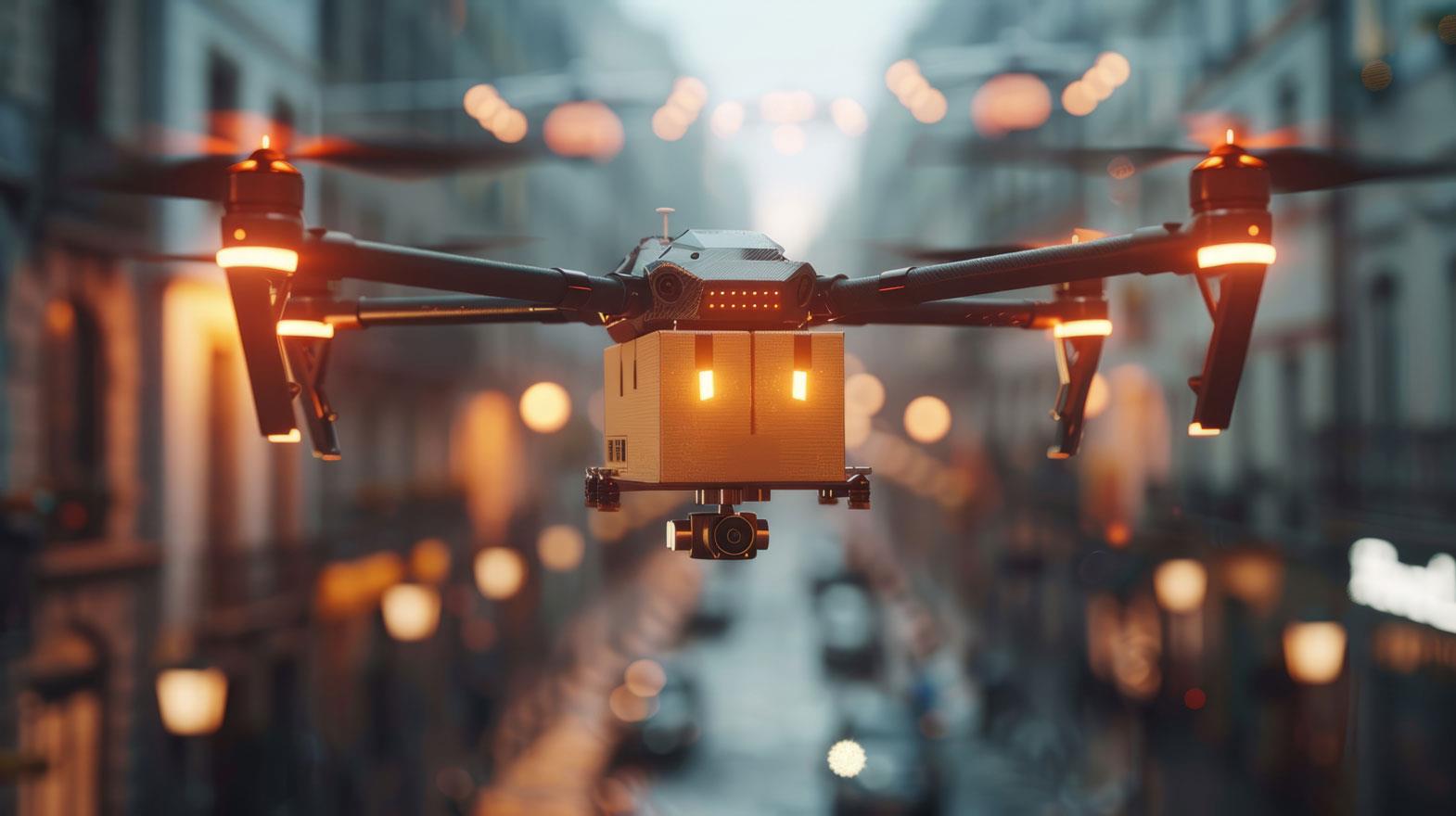Currenttrends and futuristic ideas from the logistics industry would seem like thestuff of science fiction. But, as ReginaHenkel reports, the future may bestranger than fiction.
Whether a parcel is delivered bydrones through the air, or in special tubes under the ground, the latest ideasfor package delivery read like that from a science fiction novel. In fact, thelogistics industry is reinventing itself: with the help of package drones,which find their way to isolated villages or in clogged cities easily, with anunderground tunnel network, especially made for mail, with trucks that produceordered products with a 3D printer themselves, and so on. Many of these futuremodels are being contemplated by online giant Amazon. CEO Jeff Bezos hasarticulated logistics as a top priority, pushing the issue ahead worldwide.
Thefuture is lying in the air
Many of these ideas, of course,are still in testing phases. But plans for the Prime-air drone that Amazon istrying to install are far more mature than experts had expected. The onlineretailer will not simply deliver only packets with flying quadrocopters, italso wants to build a complex supply network, deliver to any potentialrecipient no matter where they reside. Also, the setup of supply- and recharging-stationsfor the drones is part of the vision.
It's not only Amazon that will berelying on drones. Deutsche Post has been experimenting with this for yearsnow. In a pilot project last year, its small 'Paketkopter' made medicinedeliveries from the mainland to a pharmacy on the island of Juist in the NorthSea. The flight succeeded even in darkness, rain and fog-conditions under whichan aircraft cannot ordinarily fly. Swiss Post too has run tests and suppliedremote villages with medication by drones. Despite these successes, experts aresceptical whether a drone is a serious delivery option. A sky full of dronescould fail through the legislature although Amazon has reached an agreementwith the US Federal Aviation Administration for a pilot project with analtitude of approximately 400 feet. Moreover, the economic viability of dronesis not yet proven.
Race isdriven by logistics, not consumers
But why are online retailers suchas Amazon or Alibaba so insistent on drones? Why invest so much capital in thedevelopment of new delivery models, if customers are satisfied? Daniela Zimmer,responsible for the programming of the Internet World Congress in Munich inMarch 2016 which will focus among other things on logistics trends ine-commerce, said: "Recent research shows that it (the delivery) satisfiesa customer when the order arrives within three days. Same-Day-Delivery, whichis possible with drones, is primarily a forward-driven issue bylogisticians." It is not without reason, say some experts, that onlineretailers like Amazon are trying to set their delivery service partners underpressure from their own logistics projects. But that's not all. Even the threatof gridlock has been cited repeatedly over the years in order to show thenegative effects of e-commerce.
The fact, however, is: there is no
traffic jam caused by e-commerce yet. However, forecasts say that by 2018 the
package volume each year will increase by at least four per cent. At the same
time, rural exodus will continue. By 2050, 84 per cent of Germans, for example,
will live in cities, a forecast of the United Nations revealed. It is therefore
to be expected that urban infrastructure soon must come to terms with a much
higher volume of traffic than that at present. This is a key reason for the
logistics sector to look out for new models for the future.
Colourful
smorgasbord of logistics ideas
But drones are not the only ones
in this colourful pool of ideas of the logistics sector. Take, for example, the
package pipeline in Great Britain. In cooperation with DHL and funded by the
British Ministry of the Environment, Mole Solutions from Cambridge has
developed an underground tunnel system whereby the packages float in capsules
on a magnetic field. The first of these pipelines are to be installed in
Northampton. If the pilot project is successful, in a few years a nationwide
underground pipe system could traverse across the UK.
Another model for the future is
trunk delivery, which has been tested in Germany by DHL in cooperation with
Amazon and Audi, as also Hermes in cooperation with BMW. The idea to deliver
packages through the trunks of parked cars is not new. In the B2B sector, the
system has been in place for a long time. Miele technicians get their parts
directly in their trunks, delivered by TNT. Another patent of Amazon which,
however, has found far less media attention than the drones is the so-called
anticipatory shipping. "Unlike the drones, many experts consider the model
of anticipatory shipping to be really sustainable," said Zimmer.
In keeping with trends, this idea
is associated with Big Data: goods without concrete orders are provided on
truck as travelling camps in a region where these goods are ordered often or
soon according to data analysis. This helps shorten delivery times
dramatically. Amazon will even deliver products before the customer has ordered
it-the knowledge of this is based on the click history and the buying behaviour
of customers. For instance, a person who has so far always ordered new
publications by a specific author will in the future be supplied automatically
by Amazon. It's as amazing as that!
In fact, Amazon can imagine even
more in terms of logistics. Another Amazon patent describes a truck with a 3D
printer, producing the goods ordered during its cruise. While there are still
many technical problems in implementing this idea, the intended target is quite
tempting. Deliveries could be made more quickly than ever before, and the
logistics costs would still decline-finally the raw material for 3D printing
can be stored and transported considerably easier than the bulky finished
product.
When it comes to e-commerce logistics, things are changing rapidly right now. And, for sure, it will also impact the fashion business as also the relationship between traders and consumers. It makes sense to keep these developments in mind.







Comments